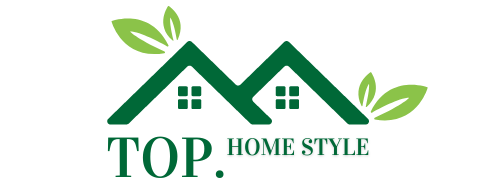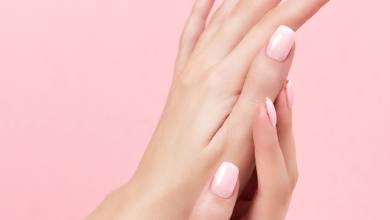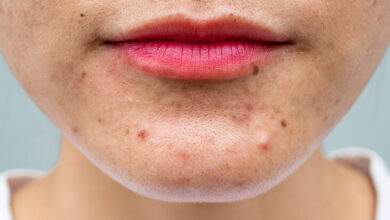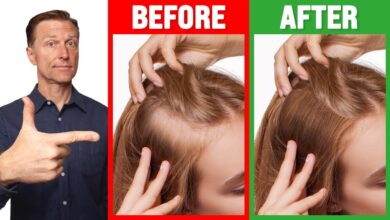Popular Essential Oils for Use on Babies and Infants
The use of essential oils for treatment, for adults and children alike, dates back to several centuries. Hence, there are some old staples and reliable choices when it comes to essential oils for use on babies. All EOs should be properly diluted with a carrier oil.
Lavender Oil
Benefit: (Lavandula augustifolia) Calming, reduces mild skin irritation (bug bites and sunburns), helps encourage restful sleep; may help reduce anxiety.
This type of oil is ideal when introducing your baby to aromatherapy for it offers a soothing and calming smell. Hence, it does not irritate your baby as compared to some other types of essential oils that emit a strong aroma. In fact, lavender oil is suggested by certified aromatherapists for babies who are suffering from sleep disorders, regardless of the reason.
How to Use Lavender Oil
- Bedtime: Make a diluted inhalant by adding a couple of drops of lavender oil to water and spritz the baby’s pillow prior to bedtime. The aromatic essences will be absorbed by the cotton and it will be inhaled by the baby as s/he sleeps during the night. The scent will produce a calming sensation for improved sleep at night.
- Bathtime: Add a few drops of lavender oil to the baby’s bath. As with any method of topical use, you have to dilute it with your chosen carrier oil to protect the baby’s skin. This method is sure to encourage restful sleep.
Chamomile Oil
Benefit: (German: Matricaria chamomilla L) aids restful sleep and relaxation; may help reduce anxiety. (Roman: Chamaemelum nobile) Also encourages restful sleep; helps with sore muscles and may reduce anxiety.
How to Use Chamomile Oil
- Massage: A good method of application is in a massage blend. Even adults find the fragrances emitted by chamomile essential oils to be effective. Chamomile is safe and gentle.
- Bathtime: Add diluted chamomile essential oil in the baby’s bath to produce the same calming and soothing effect.
Essential Oils for Diaper Rash
EOs may be used to remedy the symptoms of diaper rash. Dilute the EO in a carrier oil or a barrier cream at 1% (1 part in 100) before rubbing it into the skin.
- Tea tree: Tea tree is an extremely potent and naturally occurring immune-supporting antimicrobial, antifungal, and disinfecting agent. It can be diluted properly with a carrier oil and used to soothe diaper rash on babies 6 months and older. Due to its harshness, do not use it on babies under 6 months of age. Always perform a patch test on the skin before using.
- Lavender and Roman chamomile: Lavender and Roman chamomile have a drying effect much like alcohol and rapidly evaporate. Both of these EOs can help to reduce diaper rash symptoms. Do not use these undiluted due to sensitivity and risk of skin irritation. Always perform a patch test on the skin before using.
Popular Carrier Oils for Babies and Infants
Almond Oil
Almond oil is a popular choice of oil to use on babies. In fact, certified aromatherapists agree that it is good to use on babies on a regular basis, especially for skin care. This will help prevent certain skin conditions or other forms of irritation.
For your baby to experience its benefits, the ideal method of application would be in the form of a massage prior to taking a bath. Check with a healthcare professional before using if your child has preexisting allergies.
Jojoba Oil
For your child’s skin care, jojoba oil is an ideal type of essential oil to use. In fact, if you are to examine several baby skin care products, jojoba oil is often listed in the ingredients for the wonderful effects it produces on the skin while being gentle enough to not cause any harm.
Aside from contributing to healthier skin for your baby, jojoba oil can also be used to treat diaper rash. Simply rub a few drops of jojoba oil into the affected area to provide relief.
Coconut Oil
Coconut oil makes for an excellent natural carrier oil because of its anti-inflammatory, antioxidant, and antibacterial properties. It can be used for cradle cap, eczema, insect bites, and diaper rash. Because coconut oil solidifies at below 76 F (24 C), it will have to be in liquid state for diluting EOs. High-quality, pure coconut oil should only carry a mild coconut scent.
How to Dilute Essential Oils
The National Association for Holistic Aromatherapy (NAHA) recommends a safe dilution ratio of .5 to 1 percent for babies 3 months or older, but most certified aromatherapists will suggest 0.2%. Here’s how to dilute EOs:
References:
- 1 fl oz = 30 mL
- 600 drops per 1 fl oz
For a 0.2% dilution:
- Convert the percent to a decimal: 0.2 ÷ 100 = 0.002
- Multiply the number of drops per fl oz (600) by the decimal: 600 drops per fl oz x 0.002 = 1.2 drops (round down to 1 drop).
- Add 1 drop per 1 fl oz (30 mL) carrier oil
For a 0.5% dilution:
- Convert the percent to a decimal: 0.5 ÷ 100 = 0.005
- Multiply the number of drops per fl oz (600) by the decimal: 600 drops per fl oz x 0.005 = 3 drops
- Add 3 drops per 1 fl oz (30 mL) carrier oil
Is Rosemary Oil Safe to Use for Babies and Children?
Although it may be tempting to use certain EO blends to treat congestion and breathing issues in children, peppermint, eucalyptus, and rosemary contain cineol 1, 8, and menthol. Menthol and cineol stimulate a reflex in young children that may slow down respiratory rates. Rosemary and eucalyptus, especially, should not be used or diffused near children under 10 years of age according to renown Essential Oil Safety author, Robert Tisserand.
Safe for Use in Adults
This type of herb is popularly used for cooking but its oil is also useful for many purposes. Like almond oil, rosemary is safe enough to use diluted as a daily massage oil. It can provide two benefits: the maintenance of healthier looking skin and the prevention of skin diseases. Other benefits include improved digestive and circulatory system functions, improved eating habits, and treatment for sleeping disorders.
Can Some Essential Oils Cause Seizures in Children?
EOs can be neurotoxic and cause seizures in babies if they are not used properly. Several studies document the following cases:
- Sage oil contains the convulsants hujone, camphor, and cineole. One case study documented seizures in a newborn and toddler after exposure due to accidental ingestion.
- Other plants that are documented to contain convulsant substances include eucalyptus, fennel, hyssop, pennyroyal, rosemary, sage, savin, tansy, thuja, turpentine, and wormwood—all of which should not be used or diffused around babies and infants.
Can Essential Oil Diffusers Be Used Around Children?
EO diffusers may be used around children if they are water-based. Only use child-safe EOs, dilute them properly, and run a supervised test to make sure that no breathing issues arise.
A safer alternative is to spritz EOs around your baby or toddler’s room to create a calming atmosphere. Avoid spraying the pillow directly before bedtime to avoid accidental ingestion.
According to Mommypotamus.com, the following essential oils are safe to use in diffusers around children age two and under:
- Jasmine absolute (Jasminum sambac) for its calming effects.
- Lemongrass (Cymbopogon flexuosus); offers an uplifting smell and is a natural bug repellent.
- Ylang ylang (Cananga odorata) for its relaxing effects; helps to reduce anxiety.
The majority of cases of essential oil poisoning involve accidents with young children, often between 1 and 3 years of age. Approximately 75% of cases in the USA are in children up to 6 years old.
— Robert Tisserand, author of Essential Oil Safety
Can You Use Clove Oil for Teething Babies?
Although clove contains the natural analgesic eugenol and also offers antiseptic properties, clove bud (the least potent compared to the leaf and stem) should only be used by adults in proper dilution. Clove is actually included on a list of oils that are not safe for children under the age of two. Clove oil (leave and stem) may cause mucous membrane irritation in infants and babies.
Note: If clove is present as a trace ingredient in a product that is marketed by a reputable supplier for treating teething discomfort, this is an exception.
Is DoTERRA Safe for Use by Pregnant or Nursing Women?
The answer isn’t so straightforward. Clinical studies are scarce because of the ethical question of testing EOs on pregnant women. It is always advised that you communicate and work with your doctor regarding the incorporation of EOs into your health-care regimen—whether topically or used in a diffuser (e.g., sandalwood essential oil for morning sickness).
DoTERRA has become a prominent supply chain of EOs. Some of its EOs have been marketed to cure certain diseases and conditions despite a lack of supporting data. The FDA sent a warning letter to the company back in 2014 for these health cure claims. Regardless, doTERRA tends to be a popular name in the industry.
Consider Alternative Suppliers
Remember to look for therapeutic-grade oils and products from organically grown plant and herb sources. As mentioned, the quality of the oil begins with the growing and harvesting methods. This will ensure that the extracted oil from the plant contains no chemical residues.




